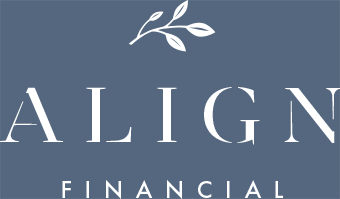If you follow investment and financial news, you must have heard about ESG investing by now. But do you know what it is all really about? If not, it’s time to get up to speed. After all, the Financial Times has forecast that ESG funds will outnumber conventional funds as soon as 2025. So ESG investing is already a big part of the investment landscape, and will only become more important.
Sometimes, people use the term interchangeably with other similar concepts like socially responsible investing (SRI) as well as impact investing. But it’s important to know the difference and how they relate to each other. Do you know how ESG investing can work for your investment portfolio? And what about its impact on the wider world around you?
What is ESG Investing?
ESG investing, like its sister concepts of SRI and impact investing, generally refers to investments that have a positive impact on the world around us. These concepts are all relatively new, and are exploding in importance. So as these developing concepts bounce around the financial world, there’s slight variations to be found in their interpretations.
Some finance professionals view SRI and impact investing as strategies of implementing ESG investment principles, while others say their aims are too distinct to be classified in the same way. The common ground between the different ideas is that they have shifted emphasis away from a sole aim of financial return for shareholders to a combined result of financial return and positive impact.
SRI, or socially responsible investing, refers to choosing or avoiding certain investments based on ethical criteria. The common practice used to be to rely on ‘negative screening’ to avoid making investments in companies associated with unethical behavior. Nowadays, it’s based on a more active, positive screening approach. Investors will choose to invest in funds associated with constructive, positive social behaviors.
Impact investing directly supports organizations to achieve something positive for society at the same time as generating a financial return. So investors might put their money behind technology, clean energy development, education or healthcare programs that will provide a financial return and lead to positive change.
ESG stands for environmental, social and governance, and uses associated criteria to examine stocks and potential investment opportunities. There is an emphasis on social responsibility, but the main objective remains a financial return. ESG investing looks at environmental, social or governance behaviors to add an extra layer of analysis to investments, by considering how these behaviors impact the risk or opportunity inherent in a particular stock.
E is For…
Let’s break it down a bit more and look at the different components of ESG investing. The E stands for environment, and in this instance it means favoring companies who do some of the following, amongst others:
- Implement corporate policies relating to climate change and greenhouse gas emissions
- Monitor and reduce their carbon footprint
- Favor renewable energy
- Implement robust recycling policies
- Provide ‘green’ initiatives for staff
S is for social, and looks at how a company would treat people. That isn’t just confined to how it treats its employees, but also its customers, its supply chain, and anyone impacted by their business in any way. This includes social elements such as:
- Employee treatment, including perks and benefits
- Diversity within the workforce
- Ethical supply chain sourcing
- Consumer friendliness
- Public stance on social justice issues
The G refers to governance, and relates to ways in which the business is run. This includes various factors, including:
- Executive pay, bonuses and perks
- The prioritization of long-term value over short-term EPS growth
- Diversity within directors and/or management
- Transparency in communication with shareholders
- Relationship with regulatory bodies
ESG and Risk Analysis
Whereas SRI and impact investing are largely driven by social conscience and the pursuit of a better world around us, ESG can be viewed through a more practical lens. People are not just using ESG factors to invest in stocks according to their values and preferences. People are using ESG factors to analyze a stock’s risk or opportunity potential, as well as its volatility.
A study in Europe showed that shares issued by companies with a higher ESG rating had both an above-average return rate and lower market volatility. That means considering ESG factors in your investment portfolio makes good financial sense. Companies who pay significant regard to ESG factors are now seen as having fundamentally better qualities and therefore stronger, from management principles to employee loyalty.
Jenny Coombs, associate professor at the College for Financial Planning, agrees. She recently noted in an interview with Investment News that the coronavirus pandemic has also provided evidence that ESG funds are more resilient during market crashes. ESG data helps identify which companies are better positioned to navigate the inevitable challenges of the future. As a result, forecasts have predicted a huge rise in sustainable investing in the months and years ahead.
Invest in Your Values
For decades, the emphasis in investing has been on generating higher and higher returns for shareholders, regardless of the associated costs. One way to look at ESG investing is to think of it as investing that you can feel good about. You’ll know you’ve chosen to invest in viable companies that have a clear conscience when it comes to issues that are important to you.
Making these conscious decisions about how your money works for you is a central part of our financial philosophy. It brings more purpose to your financial life, and means that your values are placed front and center. And living a life with purpose is a happier, more content life. So this facet of ESG investing is absolutely invaluable, both to you and to the world you live in.
Aligning your finances with your life and your values is what drives us on a daily basis, and we can show you how to integrate ESG investing into your financial plan. Contact me today to begin your ESG investing journey.













